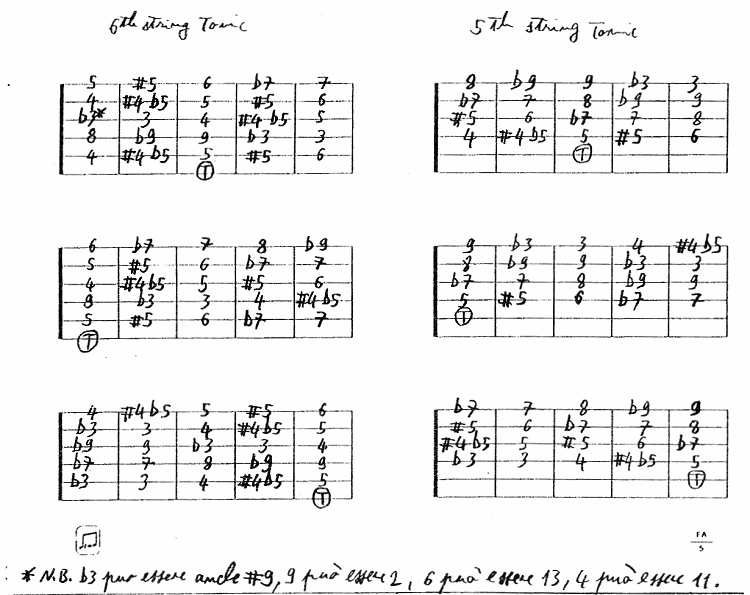Learning intervals on the fingerboard is a first stepping stone to building chords and melodies, scales and arpeggios; and –at this stage- it will help you improvise simple melodies.
Fingers will get used to moving along new paths in order to express the same (or similar) simple ideas and, with time, more complex ones. Ultimately I think it's not impossible to thoroughly master both this tuning and the traditional one (afterall there are people who speak more languages or musicians who can read music in different clefs easily switching from one to the other); however, to avoid confusion and the risk to unlearn the traditional tuning and taking ages to learn DAEGAB tuning, after experimenting with both for a while, I made the decision to forget the traditional one and to concentrate on my new tuning because I much preferred the type of pianistic thick cluster voicings it offered.
Unison -
Octave
Major
Third - Fourth
Fifth - Major Seventh
Ninth - Minor
Third
Augmented Fourth - Augmented Fifth
Minor Seventh -
Sixth
Minor
Ninth - Major Second (esaphonic scale)
Minor Second (chromatic
scale)


